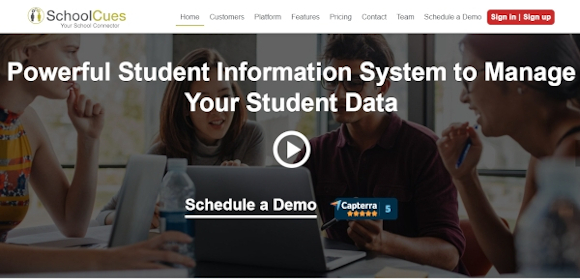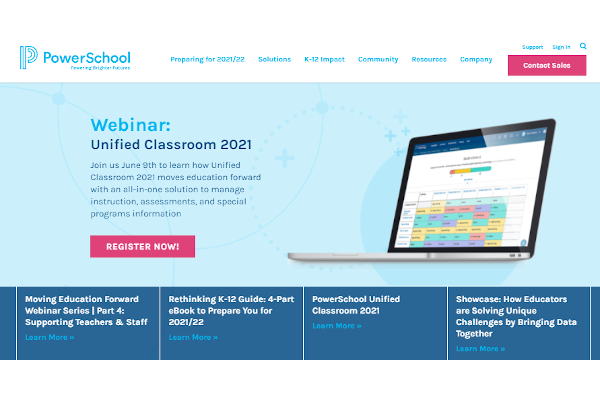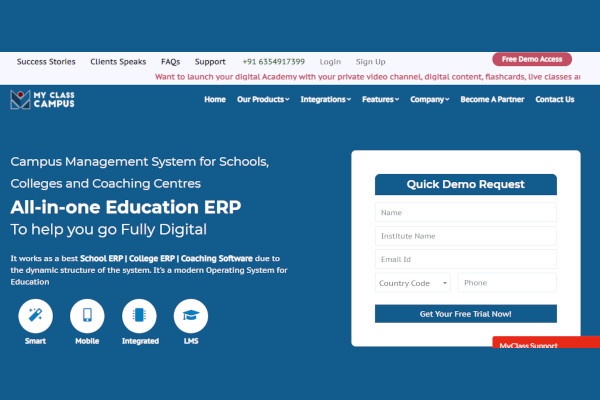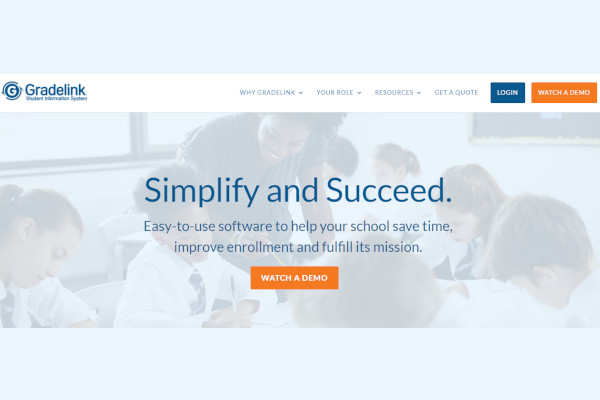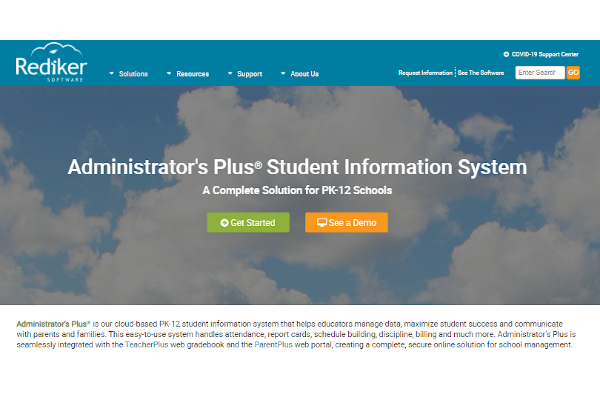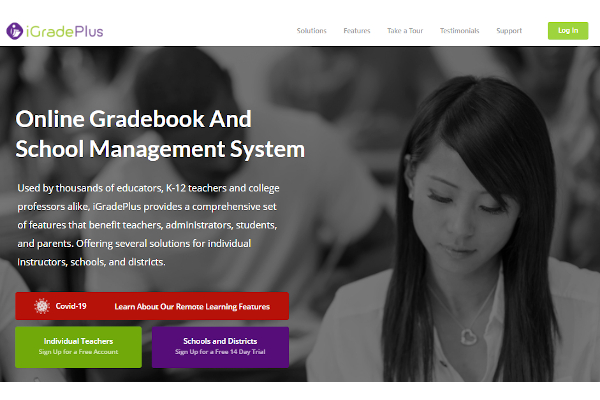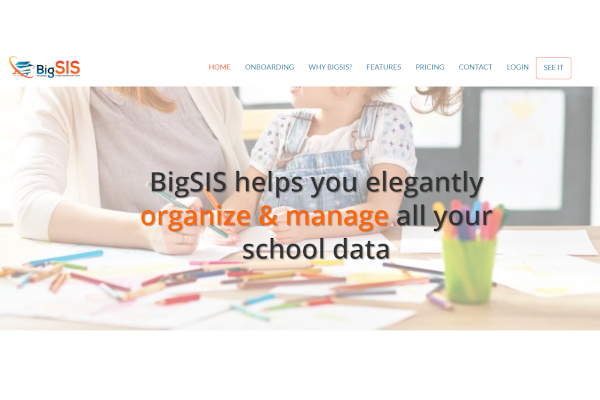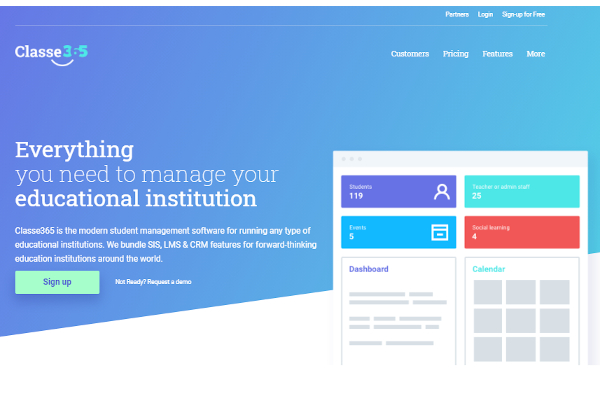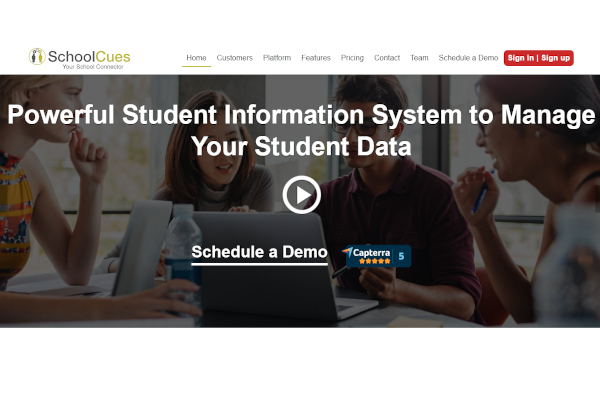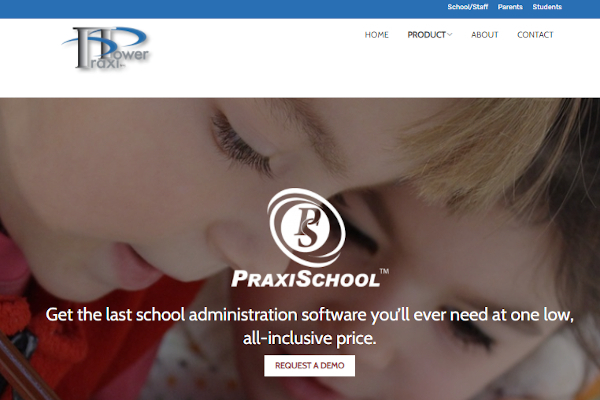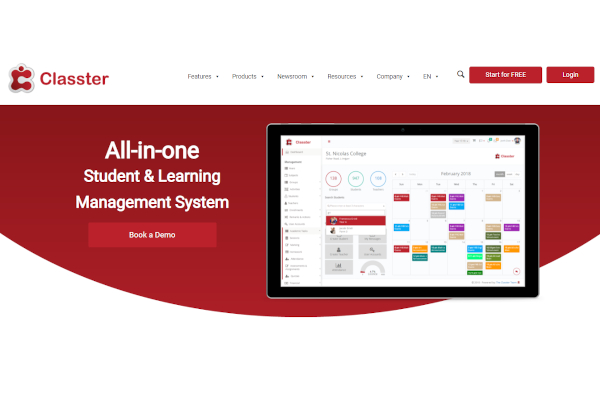As technology has become part of the learning process for educators and students, schools must reflect and adapt technology to their daily school management operations. Thankfully, these student information system software helps schools bring them to the digital age and streamline their operations in an online setting. Here are some of the best student information system software available right now.
14+ Student Information System Software
1. PowerSchool
2. Blackbaud
3. MyClassCampus
4. Gradelink
5. Alma
6. Administrator’s Plus
7. IGradePlus
8. Skyward
9. BigSIS
10. Classe365
11. Sycamore School
12. SchoolCues
13. PraxiSchool
14. Classter
15. Campus Cafe
What Is Student Information System Software?
Student information system (SIS) is a type of software that keeps track of the information of a school’s information such as grades, attendance records, behavioral records, medical records, etc. Student information system goes by different names depending on the software service such as Student management system (SMS) and Student record system (SRS).
In recent years, features of a student information system have expanded its core function to include new features such as enrollment, payments, messaging boards, etc. in an attempt for these systems to be more adaptable, resourceful, and cost-effective for schools to implement.
Benefits
A huge benefit of schools integrating student information system software in their school management is that it’s easier to archive student information records. With some software offering cloud server features in their system, it makes file archiving data of student records feel less of a daunting task. It also saves schools from the hassle of having to store physical records that may take up space and put a challenging task to educators to go through decades worth of student information.
This benefit also helps schools build an extensive yet easy to navigate data management system that has every student record on the cloud. Schools that implement student information systems in their operations would help bring them into the digital age as technology has increasingly essential to learning. With the COVID-19 pandemic forcing schools to prioritize blended learning over face-to-face classes, adopting a system that has included features such as enrollment and paying helps schools go through their usual nature school operations even though classes and administrative duties are taking place remotely.
- Easy to archive student records
- Builds an extensive data center management system for schools
- Brings schools to the digital age
- School operations still go through during blended learning
Features
A core feature of a student information system is that it stores a huge database of student information that includes but not limited to student demographics, grades, attendance records, medical records, etc. Under the system, educators may also have tools that include publishing learning modules and documenting their grades in the system which students can see once they are published. Another feature of the software is that it also generates class schedules for students, which can be automated by the system or manually input by the educators or even the students themselves depending on the permission settings by the school’s administrators.
Some software may include an integrated library management system to ensure school libraries have adapted to a digital e-library system. Some software may also include an admission and enrollment system where students can enroll in a remote setting, a feature that is popular due to the COVID-19 pandemic. The system may also include an online payment processing channel where students or parents can pay for school fees from the comfort of their homes.
- Massive database of student information
- Tools for teachers such as module publishing and documenting grades
- Class schedule generation, either automated or manually.
- Integrated library management system
- Enrollment and admissions system
- Online payment processing channels for payment of school fees
Top 10 Student Information System
1. PowerSchool
PowerSchool wants schools to adapt to digital technology with empowering tools that help students nurture their potential. Founded in 1997, the company has 2,000 employees and a revenue of $97 million.
2. Gradelink
Gradelink offers simple tools to help educators integrate technology into their school environment. Founded in 2001, the company has 25 employees and annual revenue of $7 million.
3. MyClassCampus
Founded in 2015, MyClassCampus offers extensive tools and features that help schools adapt to the current digital age such as lesson planning, fees management, and school library management.
4. Alma
Alma wants schools to adapt to the new generations that can help students reach their full potential with easy-to-use features such as digital gradebooks, rubrics, blended learning, and its smooth integration with Google Classroom that can guarantee increased engagement between educators, students, and their parents. The company has 72 employees with annual revenue of $30 million.
5. BigSIS
Founded in 2014, BigSIS helps schools organize and manage their information data with flexible tools such as student management and enrollment tracking.
6. Classe365
Classe365 offers a “unified” school management software that includes student learning management that integrates with other school management systems. Founded in 2013, the company has earned a $700,000 annual revenue.
7. Skyward
Founded in 1980, Skyward helps schools cut down their operational costs with their streamlined school management system that can help them adapt to the digital age and make their students reach their potential.
8. SchoolCues
Founded in 2009, SchoolCues offers an all-in-one school management system that has features including student information management and a parents engagement system.
9. IGradePlus
Founded in 2011, iGradePlus helps schools integrate technology to their school ecosystem with features that include student information management, grade management and attendance tracking.
10. Classter
Founded in 2015, Classtier offers integrated, flexible, and customizable features that adjust perfectly to individual schools’ ecosystems.
FAQ
What’s the difference between a school management system and a student information system?
The function of a student information system is to build a digital database of the school’s students and alumni while the school management system focuses on the daily school operations in an online setting. However, some software has made these definitions more blurred as student information system software has added features that operate similarly to a school management system in an attempt to market to schools to adapt to an “all-in-one” ecosystem that utilizes one software, which is cost-effective.
Why should schools adapt to a digital student information system?
As years go by and students come and go, building a digital student information system would help schools avoid building up more space to archive student records. It also helps schools to navigate these records easily by searing for certain keywords, names through a search engine integrated into the software.
Schools that implement the student information system in their operations would bring them into the current age as technology plays a bigger role in school relations such as learning classes, e-libraries, etc.
Related Posts
10+ Best Chemical Software for Windows, Mac, Android 2022
12+ Best Vulnerability Scanner Software for Windows, Mac, Android 2022
4+ Best Bundled Pay Management Software for Windows, Mac, Android 2022
10+ Best Trust Accounting Software for Windows, Mac, Android 2022
10+ Best Patient Portal Software for Windows, Mac, Android 2022
13+ Best Virtual Reality (VR) Software for Windows, Mac, Android 2022
12+ Best Bed and Breakfast Software for Windows, Mac, Android 2022
15+ Best Resort Management Software for Windows, Mac, Android 2022
14+ Best Hotel Channel Management Software for Windows, Mac, Android 2022
12+ Best Social Media Monitoring Software for Windows, Mac, Android 2022
10+ Best Transport Management Software for Windows, Mac, Android 2022
10+ Best Other Marketing Software for Windows, Mac, Android 2022
10+ Best Top Sales Enablement Software for Windows, Mac, Android 2022
8+ Best Industry Business Intelligence Software for Windows, Mac, Android 2022
10+ Best Insurance Agency Software for Windows, Mac, Android 2022
